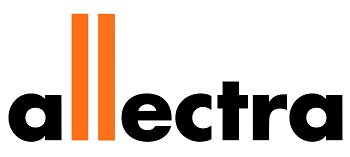In recent years, high vacuum (HV) and ultra-high vacuum (UHV) manufacturing have become more advanced and widespread. This has been influenced by the ready availability of functional HV/UHV parts for advanced vacuum systems.
Allectra manufactures, designs, and develops essential components for a range of industries, from nuclear fusion research to cryogenics. A proprietary range of Sub-D feedthroughs is among these components.

What are Sub-D Feedthroughs?
ITT Canon produced D-sub miniature connectors in the early 1950s as an innovative solution for peripheral computing connections. They were quickly acquired for industrial applications and are now used in telecommunications, consumer electronics, and even military apparatus.
The term can be traced back to the design of the casing which encloses the pin connectors. The same proven design is utilized in Sub-D feedthroughs for vacuum applications.
Sub-D Feedthrough Configurations
Sub-D connections and feedthroughs are regulated by three main international standards: IEC807-2, C-24308, and DIN 41652.
All vacuum connection components by Allectra are approved to the appropriate degree of compliance, whether planned for use on the airside or in the vacuum. These are supplied in a range of designs, such as:
- Standard Sub-D Feedthroughs: Miniature connectors secured in a type 316L stainless steel flange, with 9 – 50 gold-plated nickel (NiFe) alloy pins with a consistent power rating of 3A per pin. Several Sub-D connectors can be embedded in a single flange, with customized casings ranging up to a 160CF flange.
- High Current Sub-D Feedthroughs: Allectra HC Sub-D feedthroughs can enable high power signal connections utilizing a gold-plated proprietary alloy, with a continuous use rating of 6A per pin and a peak usage (less than 5 minutes) of 10A for each pin.
- High-Density Sub-D Feedthroughs: High-density connectors can be constructed with substantially more pins-per-housing by decreasing the diameter of each pin. Up to 26 high-density pins can be enclosed in standard 15 pin Sub-D housings, while 78 HD pins can be enclosed in standard 50 pin Sub-D housings.
- Mixed Sub-D: Power and coaxial Sub-D feedthroughs are engineered for precise signal requirements that cannot be achieved by a typical Sub-D configuration, for example for floating shield coax variations or 20A per pin.
Custom Sub-D Feedthroughs from Allectra
Allectra knows that no two vacuum systems are the same. The exact aims and requirements for each individual customer are considered to make sure that the Sub-D feedthrough selected is the ideal solution for the application.

This information has been sourced, reviewed and adapted from materials provided by Allectra Limited.
For more information on this source, please visit Allectra Limited.